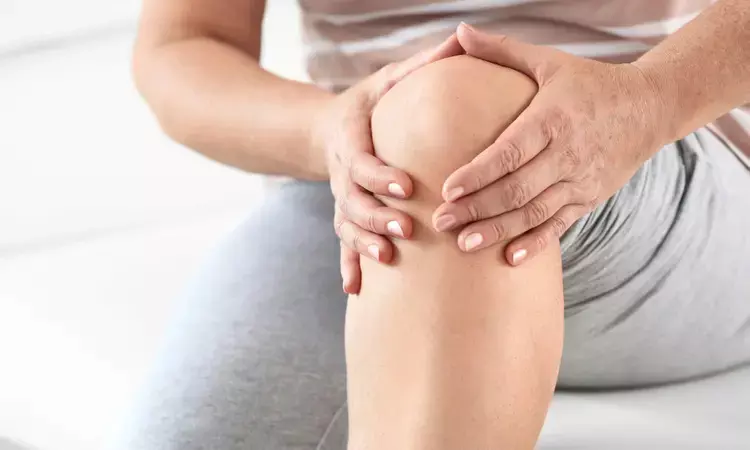- Home
- Medical news & Guidelines
- Anesthesiology
- Cardiology and CTVS
- Critical Care
- Dentistry
- Dermatology
- Diabetes and Endocrinology
- ENT
- Gastroenterology
- Medicine
- Nephrology
- Neurology
- Obstretics-Gynaecology
- Oncology
- Ophthalmology
- Orthopaedics
- Pediatrics-Neonatology
- Psychiatry
- Pulmonology
- Radiology
- Surgery
- Urology
- Laboratory Medicine
- Diet
- Nursing
- Paramedical
- Physiotherapy
- Health news
- Fact Check
- Bone Health Fact Check
- Brain Health Fact Check
- Cancer Related Fact Check
- Child Care Fact Check
- Dental and oral health fact check
- Diabetes and metabolic health fact check
- Diet and Nutrition Fact Check
- Eye and ENT Care Fact Check
- Fitness fact check
- Gut health fact check
- Heart health fact check
- Kidney health fact check
- Medical education fact check
- Men's health fact check
- Respiratory fact check
- Skin and hair care fact check
- Vaccine and Immunization fact check
- Women's health fact check
- AYUSH
- State News
- Andaman and Nicobar Islands
- Andhra Pradesh
- Arunachal Pradesh
- Assam
- Bihar
- Chandigarh
- Chattisgarh
- Dadra and Nagar Haveli
- Daman and Diu
- Delhi
- Goa
- Gujarat
- Haryana
- Himachal Pradesh
- Jammu & Kashmir
- Jharkhand
- Karnataka
- Kerala
- Ladakh
- Lakshadweep
- Madhya Pradesh
- Maharashtra
- Manipur
- Meghalaya
- Mizoram
- Nagaland
- Odisha
- Puducherry
- Punjab
- Rajasthan
- Sikkim
- Tamil Nadu
- Telangana
- Tripura
- Uttar Pradesh
- Uttrakhand
- West Bengal
- Medical Education
- Industry
High prevalence of osteoporosis in elderly patients scheduled for total knee arthroplasty

Osteoporosis is a common comorbidity in elderly patients with osteoarthritis (OA) and may increase perioperative complications in orthopedic surgery (e.g., component migration, periprosthetic fractures). Bone Mineral Density (BMD) assessment prior to TKA plays a minor role in a clinical setting so far and is often not performed on a routine basis. Considering the high prevalence of osteoporosis in elderly patients with potential implications for treatment, the recommendation to routinely perform DXA examination in patients ≥ 70 years of age is strongly highlighted to avoid complications and to ensure long implant survival.
In this study, Delsmann et al aimed to analyze for the first time BMD measured by dual-energy X-ray absorptiometry (DXA) in a consecutive series of elderly OA patients aged ≥70 years (i.e., unbiased approach) in a Central European country before TKA, focusing on a possible treatment gap. The article has been published in 'Archives of Orthopaedic and Trauma Surgery'.
The authors assessed the BMD by dual-energy X-ray absorptiometry (DXA) in 109 consecutive elderly patients (age ≥70 years) scheduled for TKA. In addition to a detailed assessment of osteoporosis and osteopenia, the influence of clinical risk factors and radiological OA severity on BMD was evaluated using group comparisons and linear regression models. In addition, they analyzed differences in BMD between patients scheduled for TKA vs. total hip arthroplasty (THA).
Key findings of the study were:
• Of the included 109 patients, 19 patients (17.4%) were diagnosed with osteoporosis and 50 (45.9%) with osteopenia.
• There was no difference between the sexes in terms of age and BMI.
• In the osteoporotic patients, a clinically relevant underdiagnosis concomitant with a serious treatment gap was observed in 95.0% of the patients.
• Body mass index, OA grade, and glucocorticoid use were identified as independent factors associated with BMD.
• No differences in BMD were found between the patients scheduled for TKA vs. THA.
The authors concluded that – "In elderly patients ≥70 years in Central Europe with endstage OA scheduled for TKA, a substantial proportion was diagnosed with reduced BMD. Most osteoporosis patients did not receive adequate treatment, indicating clinically relevant underdiagnosis and undertreatment. Low BMI, high OA severity, and the use of glucocorticoids were identified as independent factors associated with poor BMD. No differences in BMD were found when comparing patients before TKA and THA. Considering the impact on outcome, general DXA screening for elderly patients ≥ 70 years of age should be recommended before TKA. Population differences need to be respected concerning the prevalence of osteoporosis in orthopedic cohorts."
Further reading:
Prevalence of osteoporosis and osteopenia in elderly patients scheduled for total knee arthroplasty. Maximilian M. Delsmann, Constantin Schmidt et al Archives of Orthopaedic and Trauma Surgery (2022) 142:3957–3964 https://doi.org/10.1007/s00402-021-04297-x
MBBS, Dip. Ortho, DNB ortho, MNAMS
Dr Supreeth D R (MBBS, Dip. Ortho, DNB ortho, MNAMS) is a practicing orthopedician with interest in medical research and publishing articles. He completed MBBS from mysore medical college, dip ortho from Trivandrum medical college and sec. DNB from Manipal Hospital, Bengaluru. He has expirence of 7years in the field of orthopedics. He has presented scientific papers & posters in various state, national and international conferences. His interest in writing articles lead the way to join medical dialogues. He can be contacted at editorial@medicaldialogues.in.
Dr Kamal Kant Kohli-MBBS, DTCD- a chest specialist with more than 30 years of practice and a flair for writing clinical articles, Dr Kamal Kant Kohli joined Medical Dialogues as a Chief Editor of Medical News. Besides writing articles, as an editor, he proofreads and verifies all the medical content published on Medical Dialogues including those coming from journals, studies,medical conferences,guidelines etc. Email: drkohli@medicaldialogues.in. Contact no. 011-43720751


